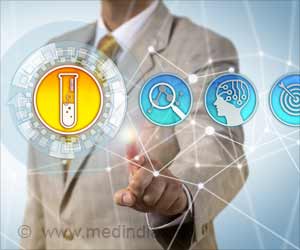ADHD rates among Indian children exceed global averages, necessitating effective medical and non-pharmacological treatments to manage symptoms and improve quality of life.
- ADHD prevalence in Indian children is higher than the global average, with significant rates among 9 and 10-year-olds
- Effective ADHD management includes both medications and non-pharmacological interventions like behavioral therapy and cognitive training
- High discontinuation rates of ADHD medications in India underscore the need for alternative treatments and better awareness
Prevalence of Attention Deficit Hyperactivity Disorder in primary school children
Go to source).
Over 10 million Indian children are diagnosed with ADHD annually. #mentalhealth #adhd #medindia’
ADHD in India
A study titled “Prevalence of Attention Deficit Hyperactivity Disorder in Primary School Children” conducted in Coimbatore found that ADHD prevalence in children is higher in India than the global average, at 11.32%. The highest rates were observed in 9-year-olds (26.4%) and 10-year-olds (25%). The study also revealed that boys are more commonly affected (66.7%), and children with ADHD often face academic and behavioral difficulties, including problems with reading and writing.Another study conducted across various parts of India indicated ADHD prevalence ranging from 2% to as high as 17%. According to an article in India Today, approximately 10 million Indian children are diagnosed with ADHD annually.
Understanding ADHD
Previously known as Attention Deficit Disorder (ADD), ADHD encompasses both inattentive and hyperactive symptoms. ADD, which lacks hyperactivity, is more frequently seen in girls but is no longer considered a separate diagnosis.There are three types of ADHD:
- Primarily Inattentive
- Primarily Hyperactive-Impulsive
- Combined
Managing ADHD
While there is no cure for ADHD, its symptoms can be managed with appropriate treatments. It is crucial for parents to collaborate with healthcare providers, including pediatricians and therapists, as well as schools and teachers.In India, ADHD treatment typically involves both medication and non-pharmacological interventions.
Medical Interventions
Medications for ADHD help balance and enhance neurotransmitters, improving symptoms. Stimulants are effective for 70-80% of individuals with ADHD and can treat both moderate and severe symptoms. Approved stimulants for children include Amphetamine (Adderall), Dextroamphetamine (Dexedrine), and others. Non-stimulant options, such as Atomoxetine, Clonidine hydrochloride (Kapvay), and Guanfacine (Intuniv), are available when stimulants cause intolerable side effects.
Other alternative medications include Amitriptyline, Bupropion, Escitalopram, and Venlafaxine, prescribed when stimulants and non-stimulants are ineffective or cause adverse effects, or if the patient has other medical conditions.
Non-pharmacological Solutions
Alternative solutions for managing ADHD in India include:
- Psychosocial Interventions: Behavioral therapy, parent training, peer and social skills training, and school-based interventions.
- Body-focused Activities: Yoga, physical exercises, sleep and mindfulness-based interventions like breathing exercises with music therapy.
- Cognitive-Behavioral Training: Techniques such as play therapy.
- Neurocognitive Training: Computer-based attention and EEG biofeedback training can also aid ADHD management.
ADHD Pharmacophobia in India
Despite the high prevalence of ADHD in India, there is significant reluctance among parents to use ADHD medications. A study found that 83.3% of children prescribed ADHD medications discontinue them within the first month, citing side effects, lack of effectiveness, hospital-related issues, and fears of addiction. However, lower-income parents are more open to non-pharmacological treatments.Early and effective intervention is key to managing ADHD and improving children's lives.
Reference:
- Prevalence of Attention Deficit Hyperactivity Disorder in primary school children - (https://www.ncbi.nlm.nih.gov/pmc/articles/PMC3890923/)
Source-Medindia
















